If your business is fiber, in my opinion, you should get to know as much about it as possible in all aspects. I do a lot of reading on all stages of alpaca fiber; on the alpaca, off the alpaca and before it even gets on the alpaca through genetics. As a hand spinner who processes and blends almost all my fibers by hand, learning how it’s processed on a large scale is a must. This past Tuesday, and hopefully all Tuesdays in the future, I’ll be heading over to Central Virginia Fiber Mill to work and learn as much as I can.
The mill is an extension of Kearney Country Alpacas and only about 2o minutes from our farm, making it very convenient for me. I’ve had them process fiber into roving in the past and have been really happy with the end product. In the future, I’ll be able to have a bigger influence in how it’s processed. I’m mostly interested in felted sheets for making items like purses or clothing.
Below is a Corriedale fleece I worked on that was to be turned into roving. *”The Corriedale was developed in New Zealand and Australia during the late 1800s’ from crossing Lincoln or Leicester rams with Merino females. The Corriedale produces bulky, high-yielding wool ranging from 31.5 to 24.5 micron fiber diameter. The fleece from mature ewes will weigh from 10 to 17 pounds (4.5-7.7 kg) with a staple length of 3.5 to 6 inches (9-15 cm). The yield percent of the fleece ranges from 50 to 60 percent. Mature rams will weigh from 175 to 275 pounds (79-125 kg), ewe weights range from 130 to 180 pounds (59-81 kg).” This fleece was a nice rich color and on the finer side of the range.
I “skirted” this fleece to get it ready for washing. Mostly I was pulling apart the locks and opening them up in preparation for washing. If I saw them, I pulled out the second cuts or contaminated pieces, but you should know that the more skirting and prepping you do at home, the better your finished product will be. Your yield will also be something that can benefit from your skirting practices. With alpaca, we should expect a small percentage of loss if your fleece is sent in to the mill fully skirted. Even better, if you are having your fleeces sorted and graded, your ratio for incoming to outgoing weight should be a lower percentage. Or is that a higher percentage??? 
Here’s some of the fleece after skirting and now ready to be washed.
And here it is after being washed one time. At the mill, water is used at 140 degrees and soaked in a specially made biodegradable detergent. This fleece is clean enough that it got one wash soak and one rinse soak. Here it is hanging to drain before putting into a washing machine to spin most of the water out of it.
After a spin in the washing machine, fleeces are fluffed up and laid out to dry on a rack. It was sunny enough to have some outside this day. Here it is spread out and drying in our unusually warm January sun.
This fleece was still drying when I left, but other fiber was being processed. After drying, the next step is sending it through the picker. The fiber is fluffed and laid out on a conveyor that pulls it in. I’m going to be brief on these next steps. Look for future post about each part of the process.
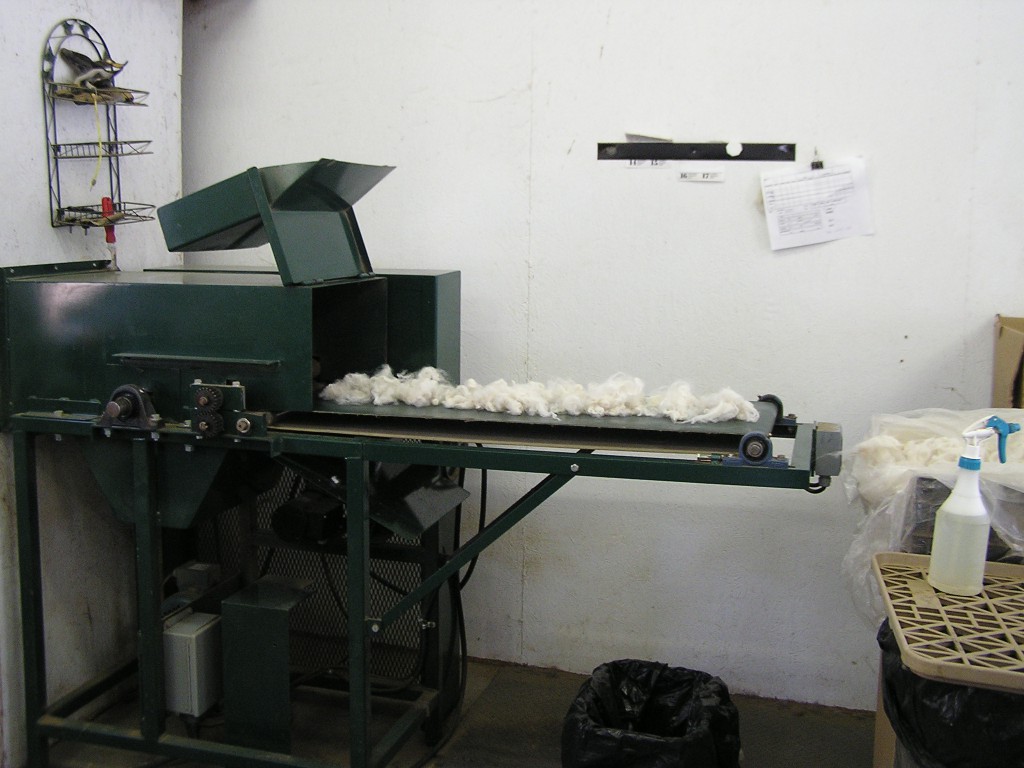 After being picked it’s ready for the drum carder.
After being picked it’s ready for the drum carder.
Here is the fiber being drafted into roving directly from the drum on the carder. If you are a spinner, this can be your final preparation at the mill.
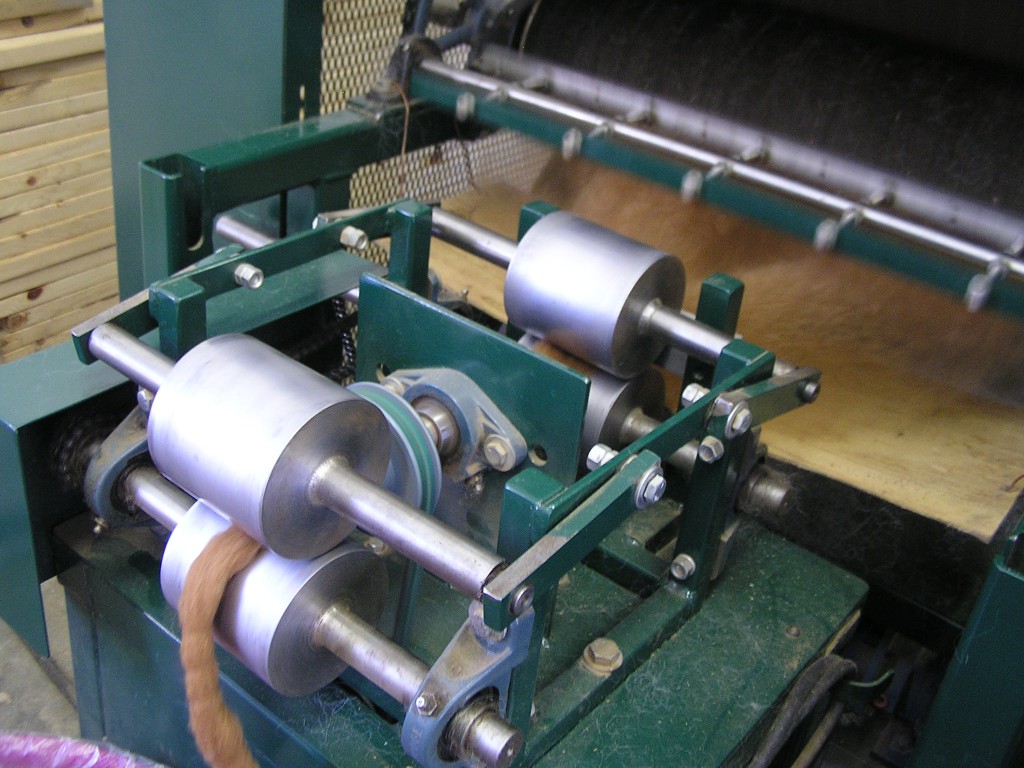 If yarn is what you want, it will go through a pin drafter, shown below.
If yarn is what you want, it will go through a pin drafter, shown below.
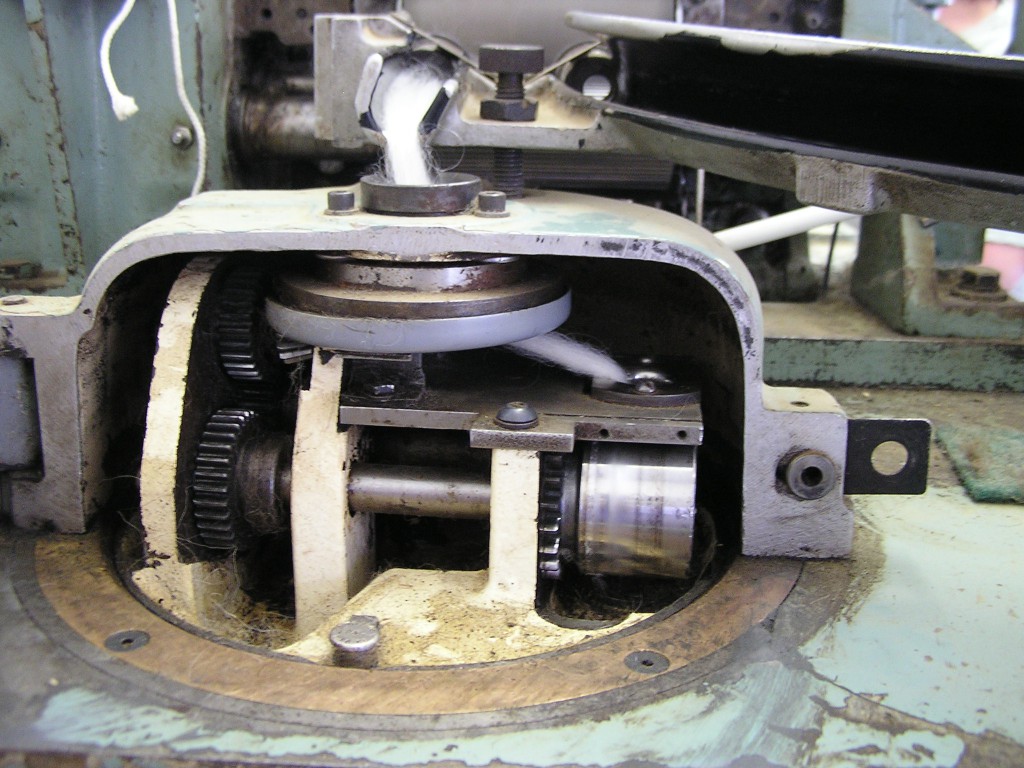 Carded batts are turned into fulled sheets on the wet felting machine. This is what I’m looking forward to the most with my fibers that I won’t use for spinning.
Carded batts are turned into fulled sheets on the wet felting machine. This is what I’m looking forward to the most with my fibers that I won’t use for spinning.
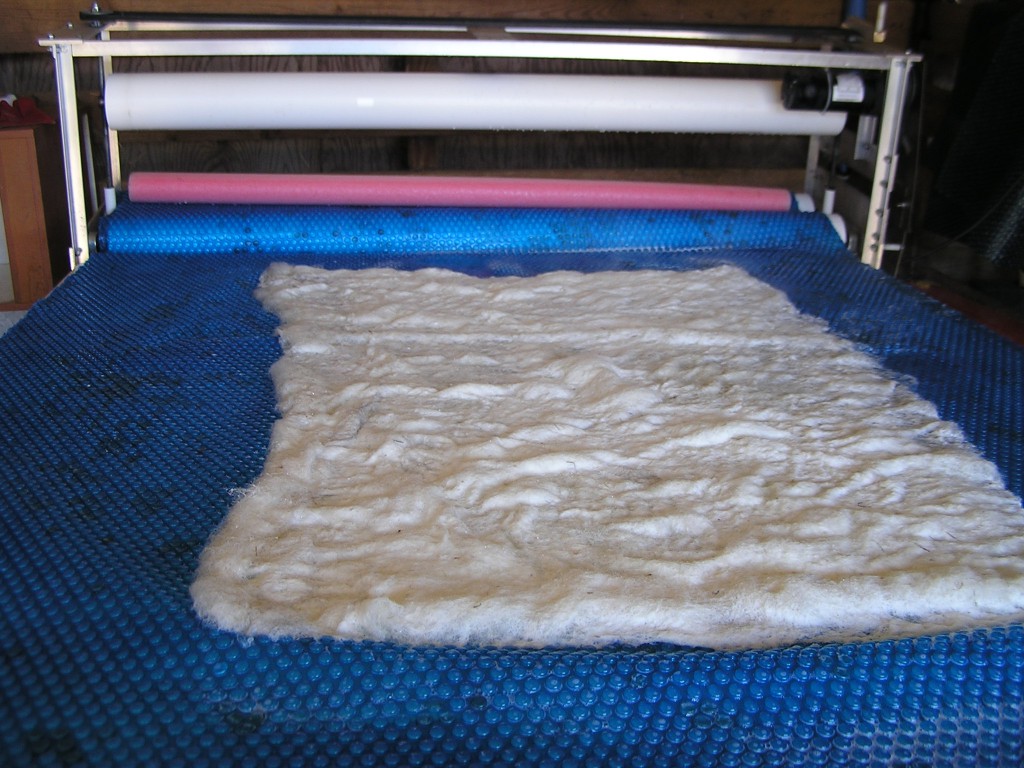 There was no yarn being spun the day I was there, so will be posting about that in the future. I will also be talking more about how to prep your fiber for greater yield. Why pay for your trash along with your fiber? My next blog will be about the fiber I’m currently dyeing, so stay tuned and please do leave a comment below. I’ll be happy to answer any of your questions.
There was no yarn being spun the day I was there, so will be posting about that in the future. I will also be talking more about how to prep your fiber for greater yield. Why pay for your trash along with your fiber? My next blog will be about the fiber I’m currently dyeing, so stay tuned and please do leave a comment below. I’ll be happy to answer any of your questions.
*copied from the website in the hyperlink.

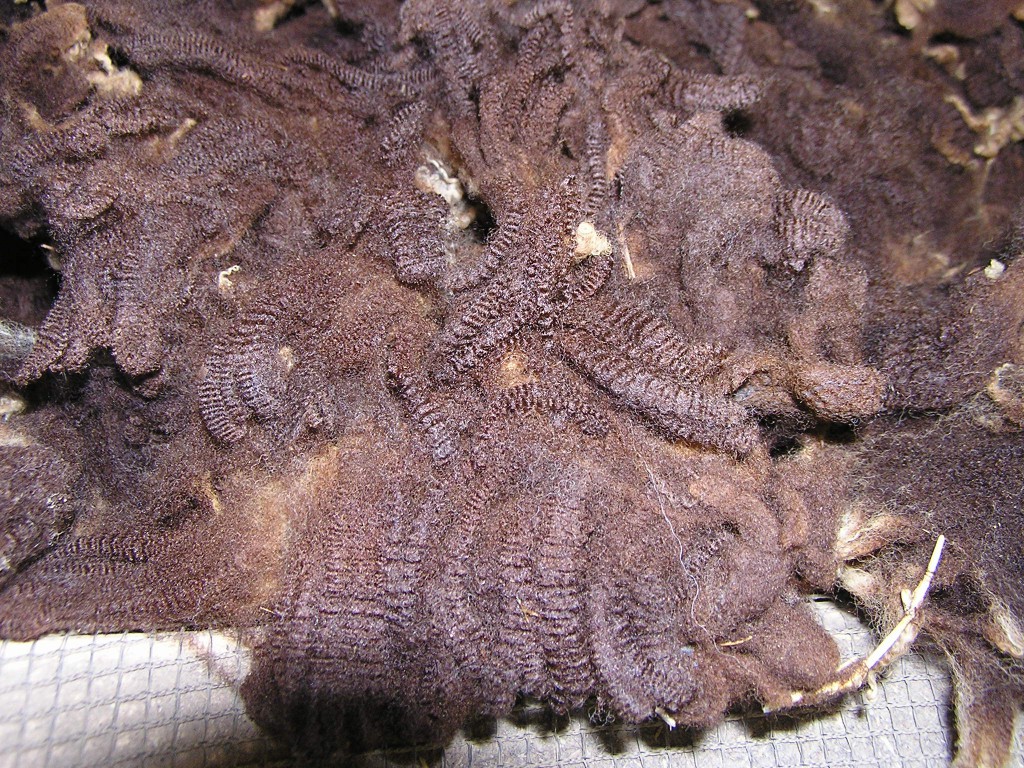
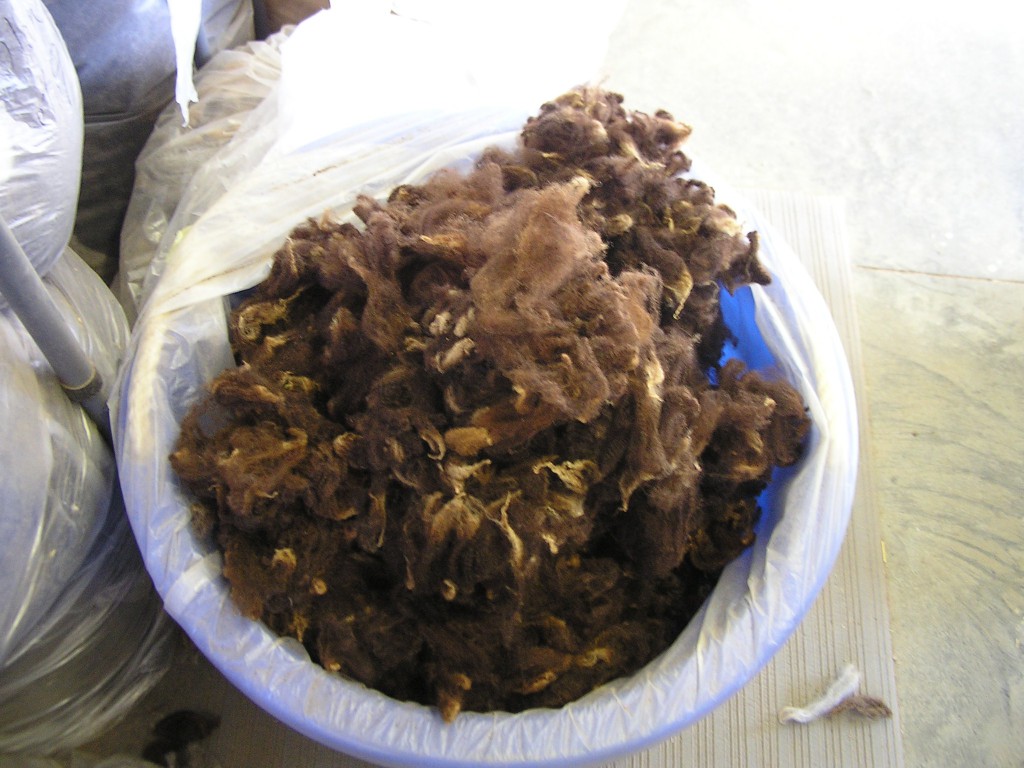
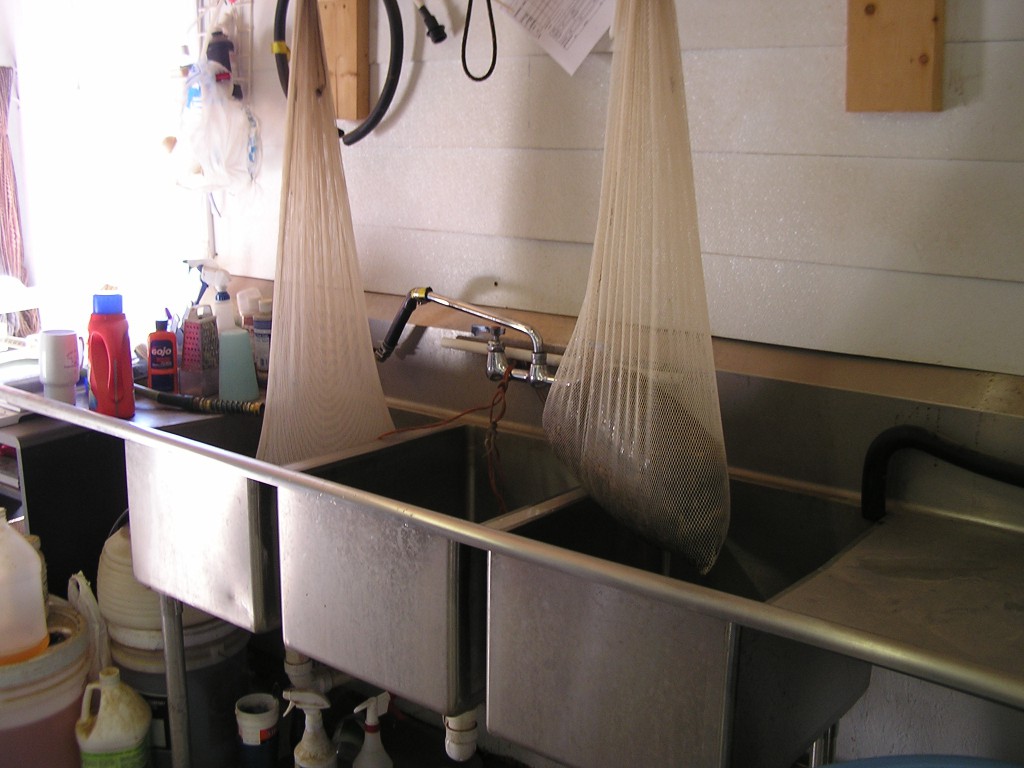
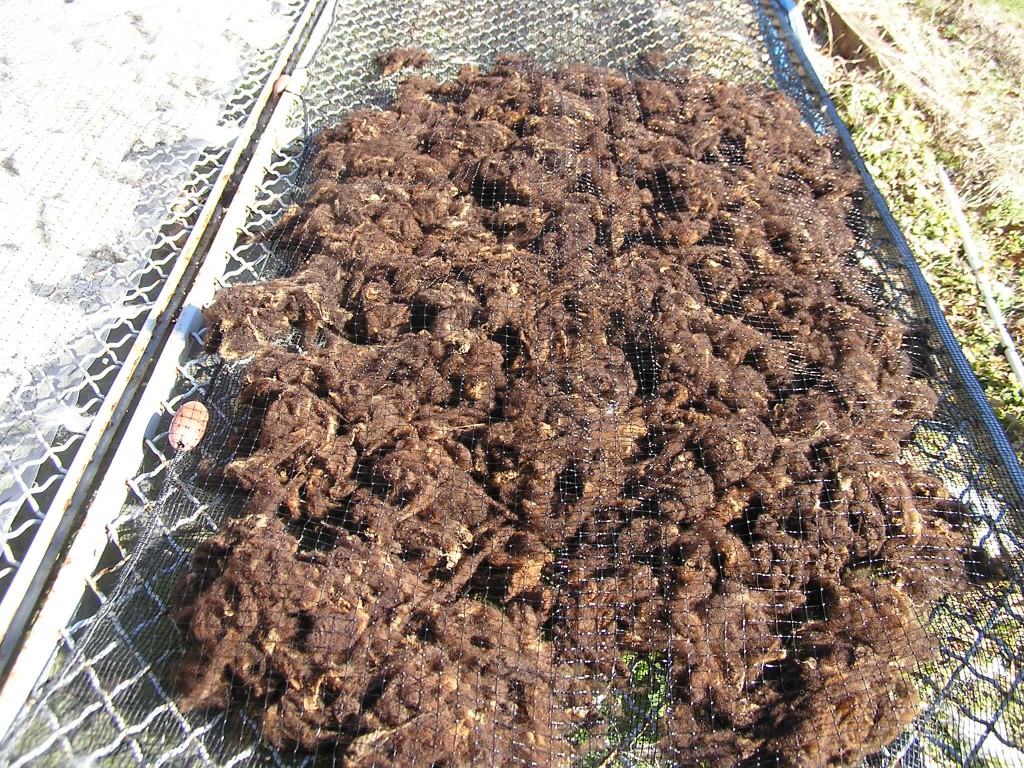
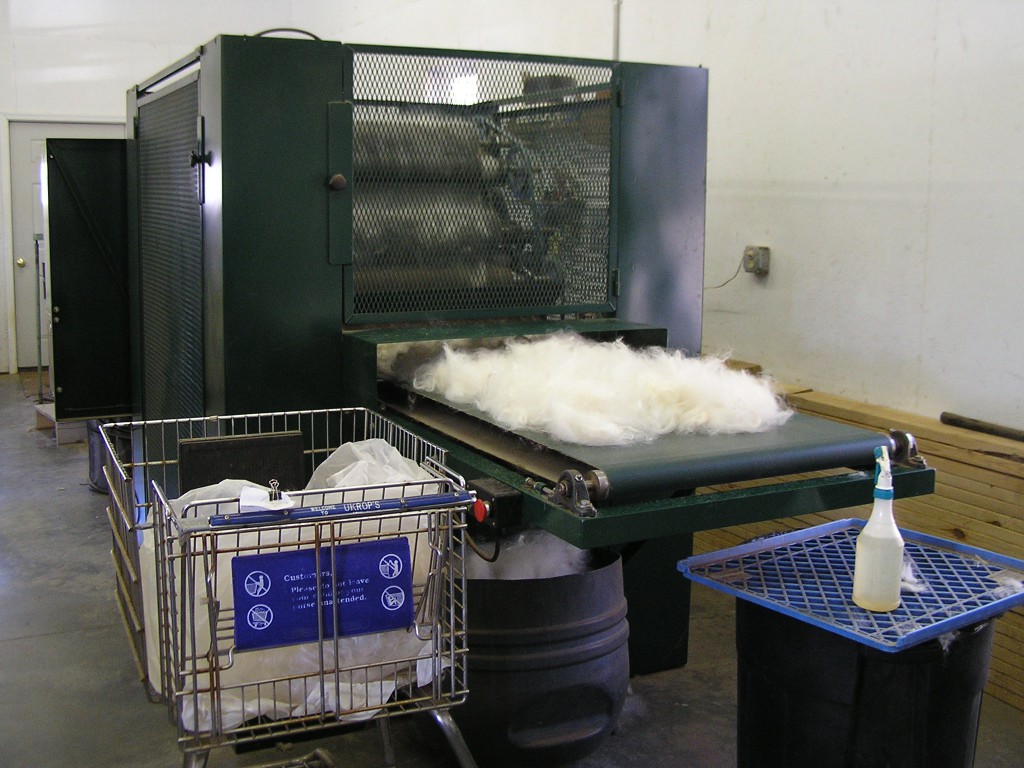
Awesome!! Look forward to reading more on it and learning from it!! I want to be as educated as I can prior to setting up our future place!! 😀
Really interesting! Do different mills have different capacity/size equipment? Or is this mill pretty standard? Really enjoyed the pictures and explanations!
Thanks for reading my blog Anna! There are different sizes of equipment, but I think that this mill has some big mill equipment. I’ll be posting about each piece of equipment with what it does in future blogs.
I am looking at the pics of the mill equipment and what is here is still fairly small/medium sized equipment. a large card can have a capacity of up to 100″.
There is definately a need for all the different sized mills out there. We use a small picker, card and tumbler but a larger commerical pin drafter and spinner.
When I talk about each piece of equipment, I’ll try to have some history on them. My next blog is going to be about skirting. Can’t believe what people send it without looking it over. I’ll try to do that this evening. Thanks for stopping by!
This is going to be such an informative blog! I’m super excited to learn all about this!